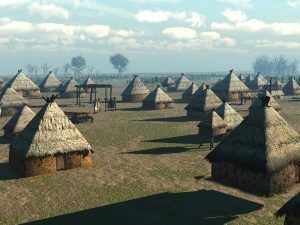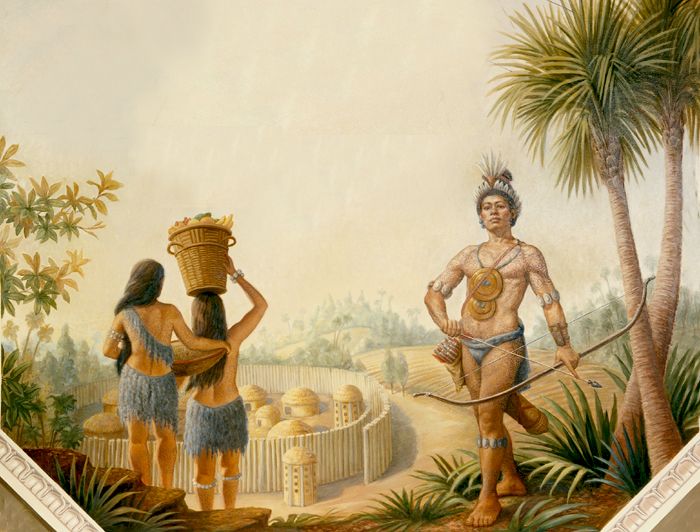
The Echoes of Cumberland: Tracing the Vanished World of the Tacatacuru
On the windswept shores of Cumberland Island, Georgia, where live oaks drip with Spanish moss and the Atlantic Ocean ceaselessly pounds the sands, a profound silence reigns. It is a silence pregnant with history, a quiet testament to the vibrant lives that once thrived here. For centuries before European sails scarred the horizon, this barrier island and its surrounding marshlands were the cherished homeland of the Tacatacuru people, a distinct yet intertwined branch of the larger Timucua linguistic group. Their story, largely whispered through archaeological fragments and the often-biased accounts of their Spanish colonizers, is a poignant microcosm of indigenous experience in the Americas: a narrative of deep connection to the land, resilient adaptation, devastating encounter, and ultimate, tragic disappearance.
To truly understand the Tacatacuru, one must first envision their world. Cumberland Island, known to them as Tacatacuru, was not merely a place of residence but the very crucible of their identity. This was a land of immense natural bounty, a veritable Eden for those who knew how to read its rhythms. The Tacatacuru were master navigators of their environment, their lives intricately woven into the tapestry of the coastal ecosystem. They were expert fishermen, harvesting the abundant bounty of the Atlantic – drum, redfish, oysters, clams – from their sturdy canoes. The marshlands provided a rich larder of waterfowl, deer, and other game, while the island’s interior offered edible plants, berries, and timber.
Archaeological digs on Cumberland Island and nearby mainland sites have unveiled compelling glimpses into their sophisticated way of life. Massive shell middens, essentially ancient refuse piles, stand as enduring monuments to generations of feasting and daily life, sometimes stretching for hundreds of feet and rising several meters high. Within these middens, and at other settlement sites, archaeologists have unearthed intricate pottery shards, tools fashioned from shell and bone, and evidence of well-organized communities. These findings paint a picture of a people living in harmony with their environment, possessing a deep understanding of sustainable resource management, and fostering a rich cultural life expressed through their crafts and communal gatherings. As one historian, observing the remnants of such a culture, might reflect, "The very ground they walked upon tells a story of an enduring and intelligent adaptation to one of the most dynamic environments on Earth."

The Tacatacuru were not isolated. They were part of a complex network of Timucua-speaking peoples who inhabited a vast swathe of what is now northern Florida and southeastern Georgia. While their exact political structure is debated, they likely lived in autonomous villages or small chiefdoms, possibly allied with or tributary to larger Timucuan polities like the Mocama. Trade routes connected them to interior tribes, exchanging coastal resources for inland goods. Their language, Mocama, was a dialect of Timucua, spoken across this coastal region, a testament to a shared heritage and interconnectedness.
The tranquility of this existence was shattered in the 16th century with the arrival of European explorers. Juan Ponce de León touched Florida’s shores in 1513, followed by a succession of Spanish, French, and English adventurers. While initial encounters were sporadic, the Spanish eventually established a permanent presence in La Florida with the founding of St. Augustine in 1565 by Pedro Menéndez de Avilés. This marked the beginning of a relentless push to colonize, convert, and control the indigenous populations.
For the Tacatacuru, this meant the establishment of the Spanish mission system. Though often presented by the Spanish as a benevolent effort to bring "salvation" and "civilization," the missions were, in practice, instruments of imperial expansion and cultural subjugation. On Cumberland Island itself, and on nearby St. Simons Island, missions like San Pedro de Mocama were established, drawing the Tacatacuru and their Mocama kin into the Spanish orbit. Friars, primarily Franciscans, arrived with crucifixes and catechisms, seeking to replace ancient spiritual beliefs with Catholicism.
The impact of the missions was a double-edged sword, a Faustian bargain for many indigenous communities. On one hand, some Tacatacuru may have initially welcomed the Spanish for strategic reasons, hoping for protection against hostile interior tribes or access to European trade goods like metal tools, cloth, and glass beads. The Spanish presence could offer a semblance of stability in a region increasingly fraught with intertribal conflict exacerbated by European rivalries.
However, the downsides were catastrophic. The most immediate and devastating impact was the introduction of Old World diseases to which the indigenous populations had no immunity. Smallpox, measles, influenza, and other pathogens swept through communities like wildfire, decimating populations. It is estimated that indigenous populations across the Americas plummeted by 90% or more within a century of contact, and the Tacatacuru were no exception. Villages that once teemed with life became ghost towns, their inhabitants wiped out by invisible enemies. The loss of elders, who were the repositories of generations of knowledge, traditions, and language, was an irreparable blow to cultural continuity.
Beyond disease, the mission system fundamentally altered the Tacatacuru way of life. They were encouraged, and often compelled, to abandon their traditional hunting, fishing, and gathering cycles for sedentary agricultural labor, growing crops for the Spanish garrisons and friars. Their spiritual practices, ceremonies, and language were suppressed, replaced by Spanish Mass and instruction in Castilian. Traditional governance structures were undermined, with Spanish authorities often installing compliant chiefs or exercising direct control. The imposition of forced labor, demanding tribute in the form of food or labor on Spanish projects, further eroded their autonomy and well-being.
"The mission period represents not just a demographic catastrophe," noted historian Jerald T. Milanich, speaking of the broader Timucua experience, "but also a profound cultural unraveling, where the very fabric of indigenous society was strained to its breaking point." The Tacatacuru, like many others, found themselves trapped between a vanishing past and an oppressive, uncertain future.
The 17th century brought increasing instability. English colonists to the north, in Carolina, began to exert their influence, often inciting their indigenous allies, such as the Creek and Yamasee, to raid Spanish missions and enslave the inhabitants. These slave raids were brutal and relentless, further depopulating the already weakened Tacatacuru communities. The Guale Rebellion of 1597, though primarily involving a neighboring Timucuan group to the north, sent shockwaves through the Spanish mission provinces and highlighted the deep resentment simmering beneath the surface of coerced conversion.

By the late 17th and early 18th centuries, the situation for the remaining Tacatacuru was dire. Their numbers, once robust, had dwindled to a mere fraction of what they had been. They were caught in the vise of imperial conflict between Spain and England, their ancestral lands becoming a battleground. The Yamasee War (1715-1717), a massive conflict involving numerous indigenous groups against the English, further destabilized the region, scattering and destroying many of the remaining mission Indians.
The few surviving Tacatacuru, along with other remnants of the Timucua, sought refuge in St. Augustine or were absorbed into other, larger indigenous groups further south in Florida. Their distinct identity, language, and culture, once vibrant and deeply rooted on Cumberland Island, faded from the historical record. By the mid-18th century, the Tacatacuru as a discernible people had effectively vanished, their name becoming a historical footnote, their legacy primarily residing in the land itself.
Yet, their story is not one of complete erasure. The Tacatacuru may have disappeared as a distinct entity, but their presence shaped the very landscape and history of southeastern Georgia. The shell mounds still stand, silent sentinels of a bygone era. Place names, though often Anglicized or Spanish-derived, sometimes carry echoes of the Timucuan tongue. Their enduring spirit, their profound connection to the land, and their tragic fate serve as a powerful reminder of the human cost of colonization and the fragility of cultural heritage.
Today, as visitors stroll the pristine beaches of Cumberland Island National Seashore, they walk on ground hallowed by generations of Tacatacuru life. The rustling of the palmetto fronds and the roar of the ocean are the only sounds left to whisper tales of a people who once thrived here. To remember the Tacatacuru is to acknowledge the rich, complex tapestry of American history – a tapestry that includes not only the stories of colonizers but also, and perhaps more importantly, the vibrant, resilient, and ultimately tragic narratives of the indigenous peoples whose lands and lives were forever transformed by encounter. Their legacy is a call to listen closely to the land, to respect the deep histories embedded within it, and to ensure that the echoes of their existence are never truly silenced.


